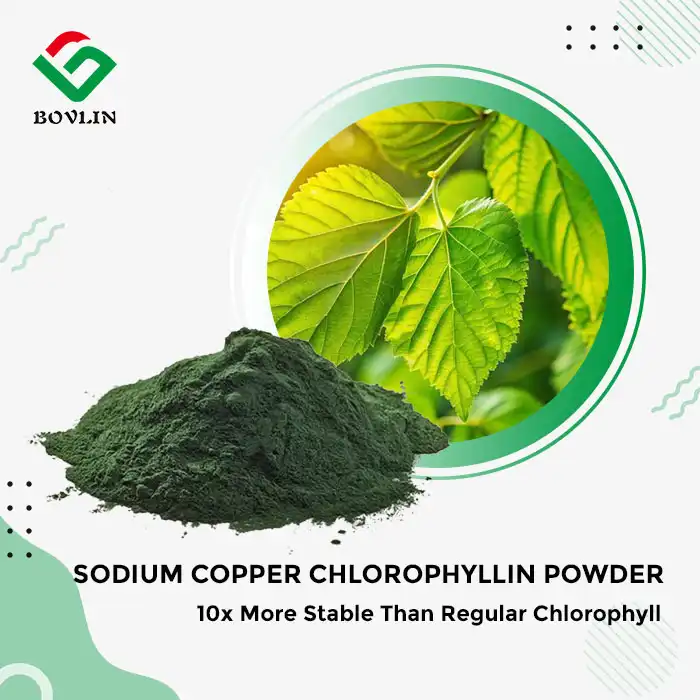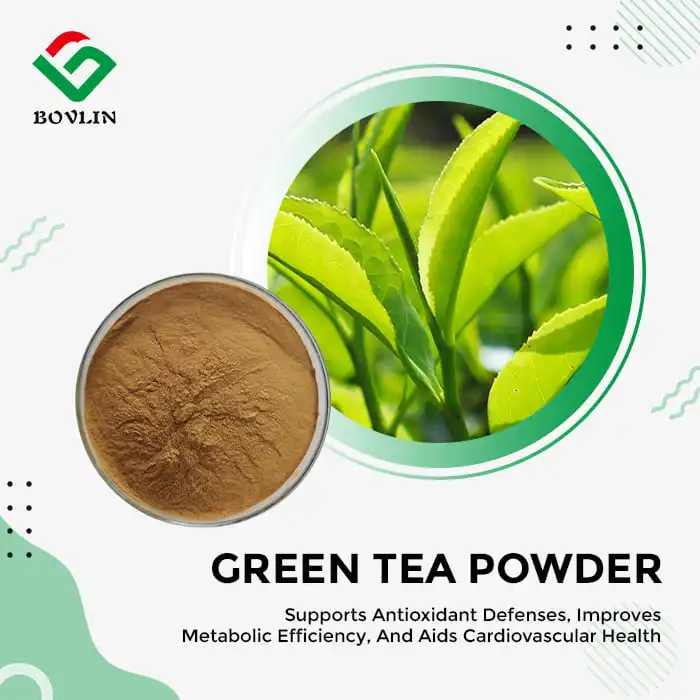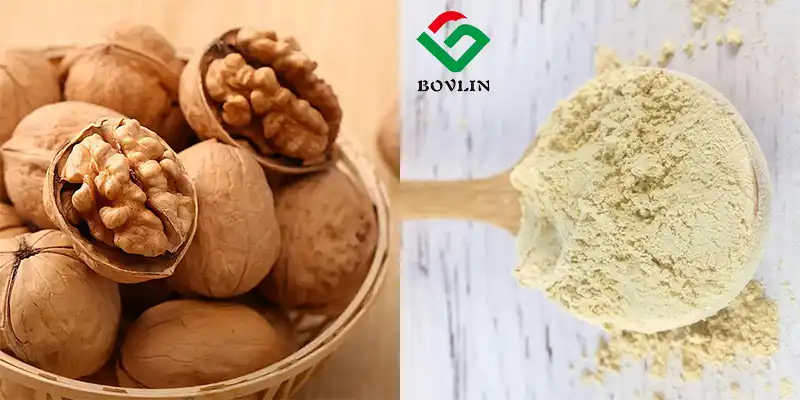What Functional Properties Make Walnut Peptide Valuable?
Antioxidant Capacity
Walnut peptide exhibits remarkable antioxidant properties, making it a valuable ingredient for manufacturers aiming to enhance the nutritional profile of their products. The peptides derived from walnuts have demonstrated the ability to neutralize harmful free radicals, which are implicated in various cellular damages and age-related degenerative processes. This antioxidant capacity stems from the unique amino acid composition of walnut peptides, particularly their high content of aromatic and hydrophobic amino acids. These structural features enable walnut peptides to effectively scavenge reactive oxygen species and chelate metal ions, contributing to their potent antioxidant activity.
Anti-inflammatory Effects
Another crucial functional property of walnut peptide is its anti-inflammatory potential. Chronic inflammation is associated with numerous health issues, and ingredients that can mitigate inflammatory responses are highly sought after in the nutraceutical industry. Walnut peptides have shown promising results in modulating inflammatory pathways, potentially by inhibiting pro-inflammatory cytokines and enzymes. This anti-inflammatory activity makes walnut peptide powder an attractive option for manufacturers developing products aimed at supporting overall health and wellness.
Bioavailability and Absorption
The functional value of walnut peptide is further enhanced by its excellent bioavailability and absorption properties. Unlike larger protein molecules, peptides are smaller and can be more easily absorbed by the body. Walnut peptides, in particular, have demonstrated superior absorption rates compared to intact proteins. This characteristic ensures that the bioactive components of walnut peptide can effectively exert their beneficial effects within the body. The enhanced bioavailability of walnut peptide makes it an efficient ingredient for manufacturers looking to maximize the nutritional impact of their products.
Bioactive Components in Walnut Peptide Formulations
Amino Acid Profile
The bioactive potential of walnut peptide formulations is largely attributed to their unique amino acid profile. Walnut proteins are rich in essential amino acids, including arginine, glutamic acid, and aspartic acid. When these proteins are hydrolyzed to form peptides, the resulting amino acid sequences contribute to various biological activities. For instance, arginine-rich peptides have been associated with cardiovascular health benefits, while glutamic acid-containing peptides may play a role in cognitive function. The balanced amino acid composition of walnut peptides makes them a versatile ingredient for manufacturers seeking to enhance the nutritional value of their products.
Bioactive Peptide Sequences
Within walnut peptide formulations, specific peptide sequences have been identified as key contributors to their bioactive properties. These sequences, typically ranging from 2 to 20 amino acids in length, exhibit various physiological effects. Some peptide sequences derived from walnuts have shown ACE-inhibitory activity, suggesting potential benefits for blood pressure regulation. Others have demonstrated antioxidant properties, contributing to the overall free radical scavenging capacity of the product. The presence of these bioactive peptide sequences enhances the functional value of walnut peptide powder, making it an attractive ingredient for nutraceutical applications.
Phenolic Compounds
In addition to peptides, walnut peptide formulations often contain trace amounts of phenolic compounds that contribute to their bioactive profile. These phenolics, including ellagic acid and its derivatives, are potent antioxidants that work synergistically with the peptides to enhance the overall bioactivity of the formulation. The presence of these phenolic compounds adds another layer of functionality to walnut peptide, potentially offering additional health benefits beyond those provided by the peptides alone. This combination of bioactive components makes walnut peptide a multifaceted ingredient for manufacturers looking to develop innovative, health-promoting products.
Applications of Walnut Peptide in Food and Nutraceuticals
Functional Food Ingredients
Walnut peptide has found significant applications as a functional food ingredient, offering manufacturers an opportunity to enhance the nutritional profile of their products. The versatility of walnut peptide powder allows for its incorporation into a wide range of food products, including beverages, baked goods, and dairy alternatives. When used as an ingredient in functional foods, walnut peptide can contribute to improved antioxidant capacity, potentially extending shelf life while offering additional health benefits. Manufacturers have successfully utilized walnut peptide in protein bars, nutritional shakes, and fortified snacks, capitalizing on its amino acid profile and bioactive properties to create value-added products that appeal to health-conscious consumers.
Nutraceutical Formulations
In the realm of nutraceuticals, walnut peptide has emerged as a promising ingredient for various formulations. Its bioactive properties make it particularly suitable for supplements aimed at supporting cardiovascular health, cognitive function, and overall wellness. Nutraceutical manufacturers have incorporated walnut peptide into capsules, tablets, and powdered supplement blends, often combining it with other complementary ingredients to create targeted formulations. The anti-inflammatory and antioxidant properties of walnut peptide make it an attractive option for products designed to support healthy aging and combat oxidative stress. Additionally, the potential ACE-inhibitory activity of certain walnut peptide sequences has sparked interest in developing nutraceutical products for blood pressure management.
Sports Nutrition Products
The sports nutrition industry has also recognized the potential of walnut peptide as a valuable ingredient. The balanced amino acid profile of walnut peptide powder makes it an excellent protein source for muscle recovery and growth. Sports nutrition manufacturers have incorporated walnut peptide into pre- and post-workout supplements, protein powders, and recovery drinks. The antioxidant properties of the product may offer additional benefits for athletes by helping to combat exercise-induced oxidative stress. Furthermore, the anti-inflammatory potential of the product could contribute to reduced muscle soreness and improved recovery times, making it an attractive ingredient for sports nutrition products targeting both professional athletes and fitness enthusiasts.
Conclusion
Walnut peptide stands out as a versatile and potent ingredient with immense potential in the food and nutraceutical industries. Its unique combination of functional properties, bioactive components, and diverse applications make it a valuable asset for manufacturers seeking to innovate and meet the growing demand for health-promoting products. As research continues to uncover new benefits and applications of the product, its role in functional foods, nutraceuticals, and sports nutrition is likely to expand, offering exciting opportunities for product development and market growth.
Contact Us
Are you ready to explore the potential of walnut peptide in your product formulations? Contact Shaanxi Bolin Biotechnology Co., Ltd. today to learn more about our high-quality walnut peptide powder and how it can enhance your products. Reach out to us at sales1@bovlin.com to discuss your specific needs and discover how we can support your innovation journey.












